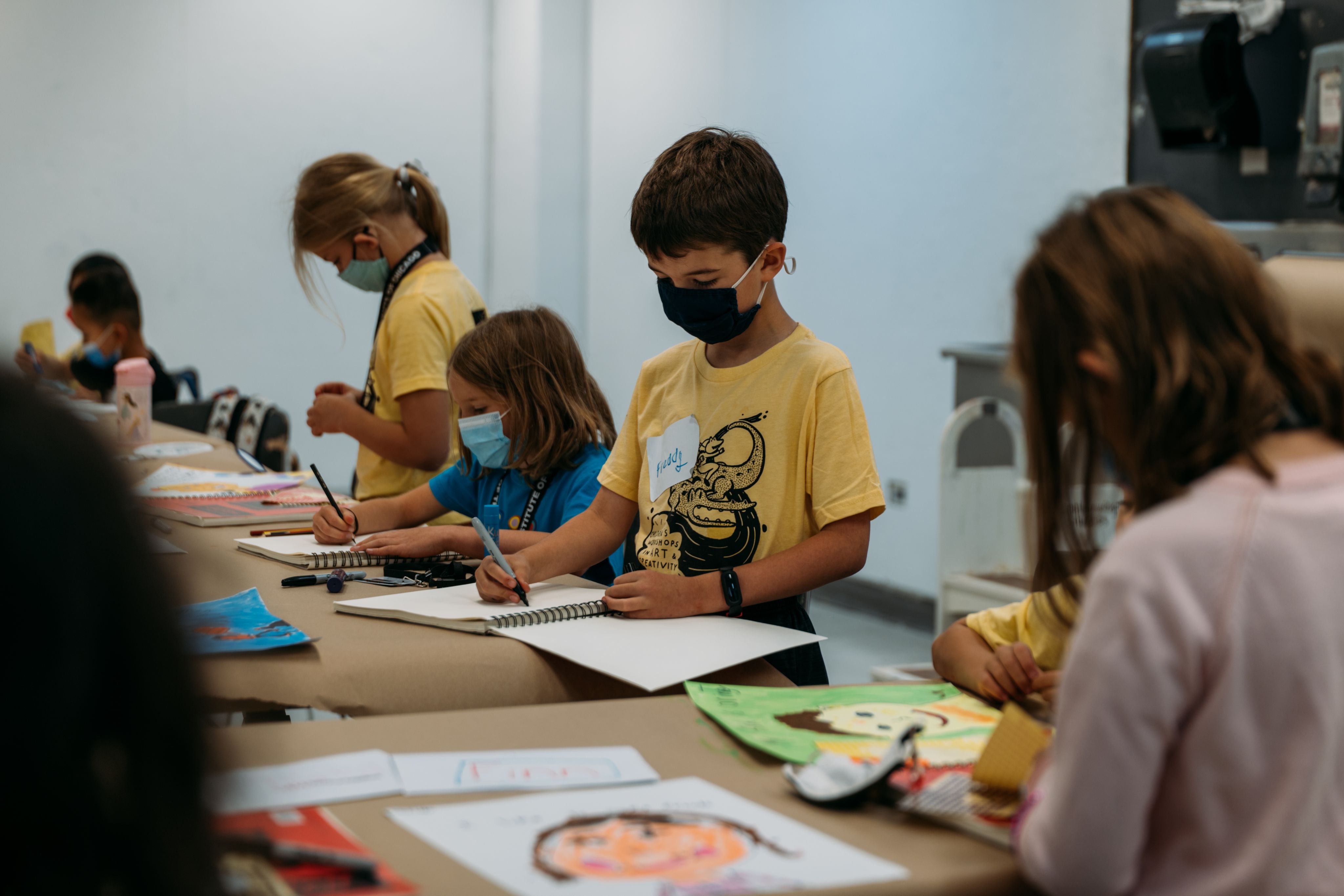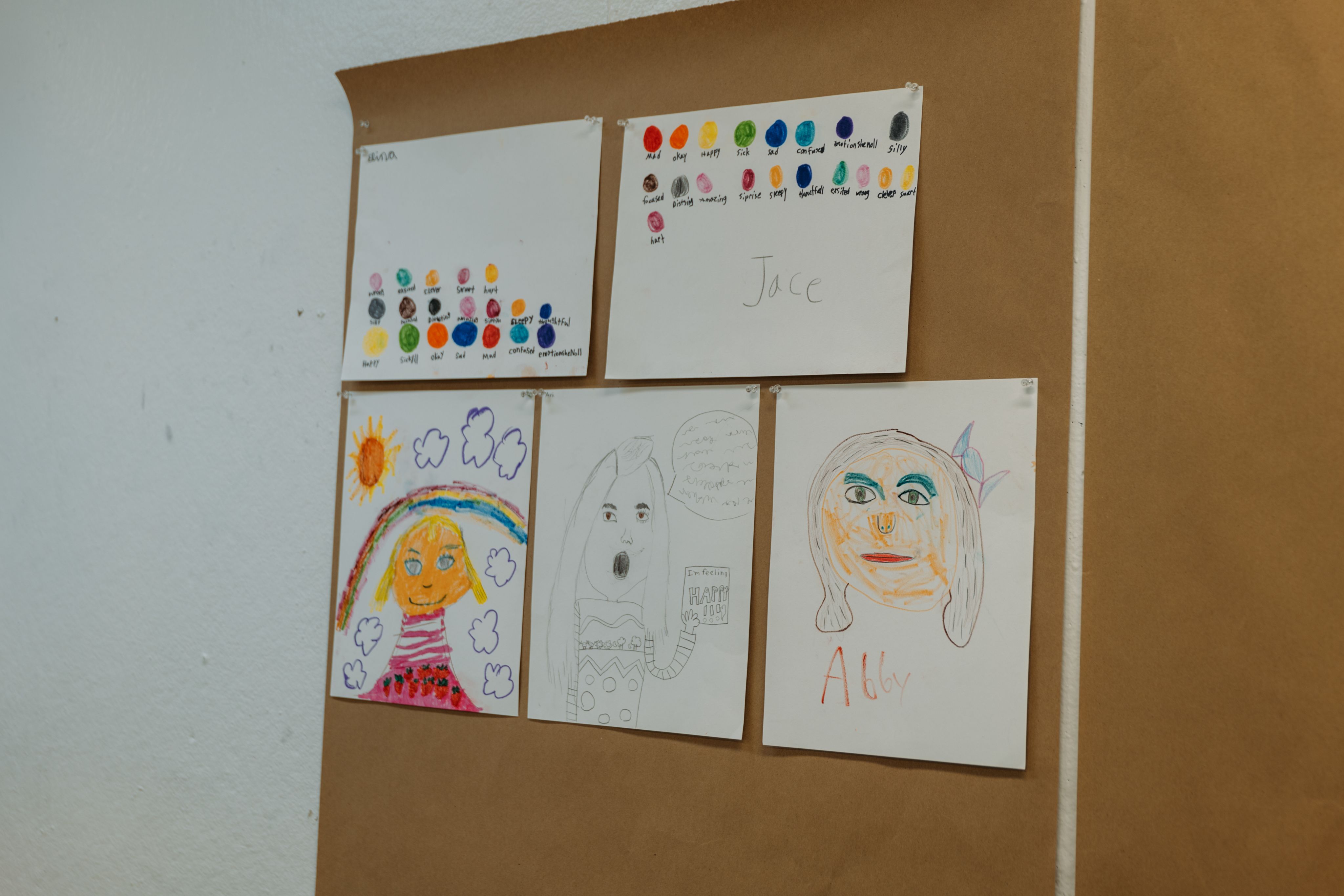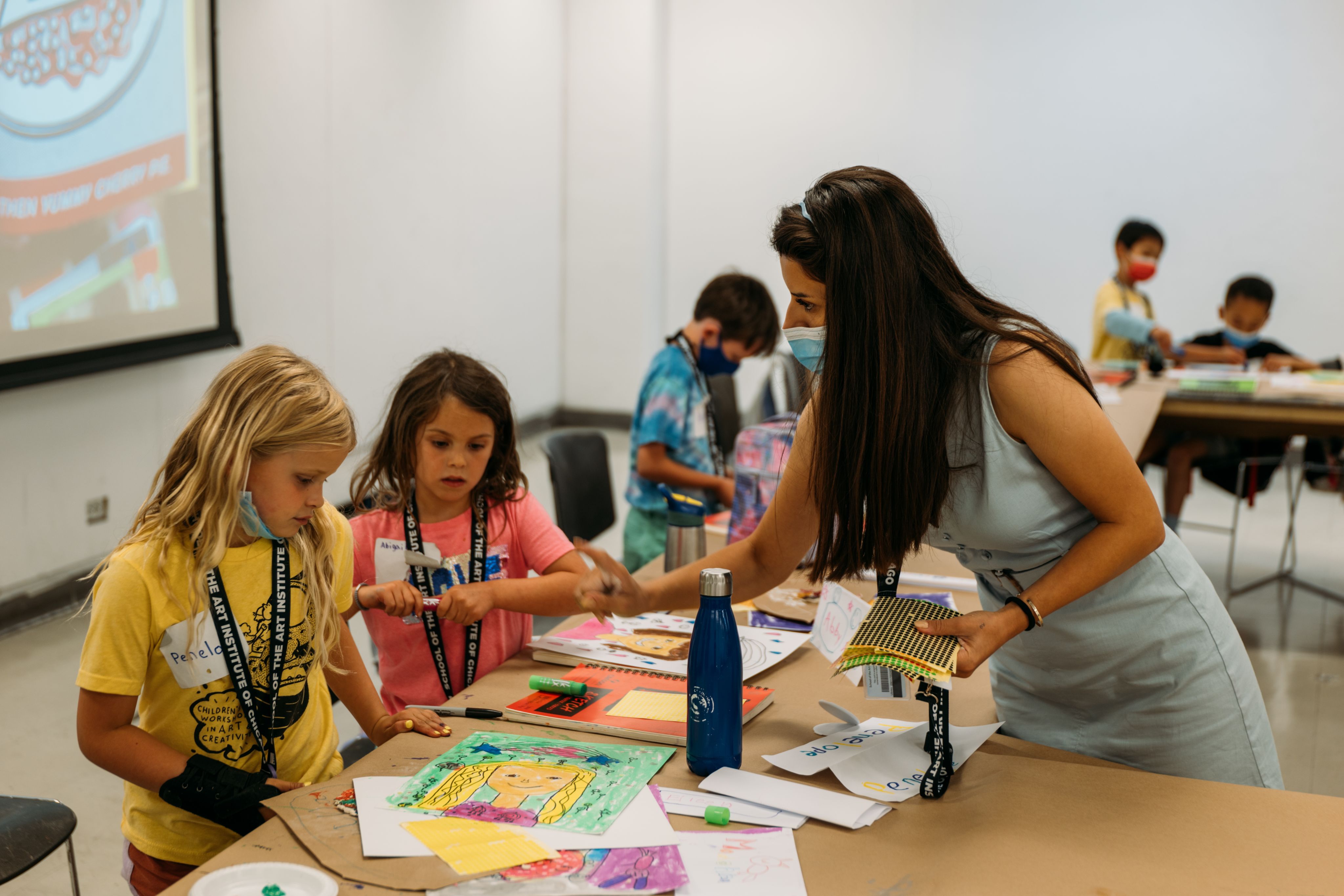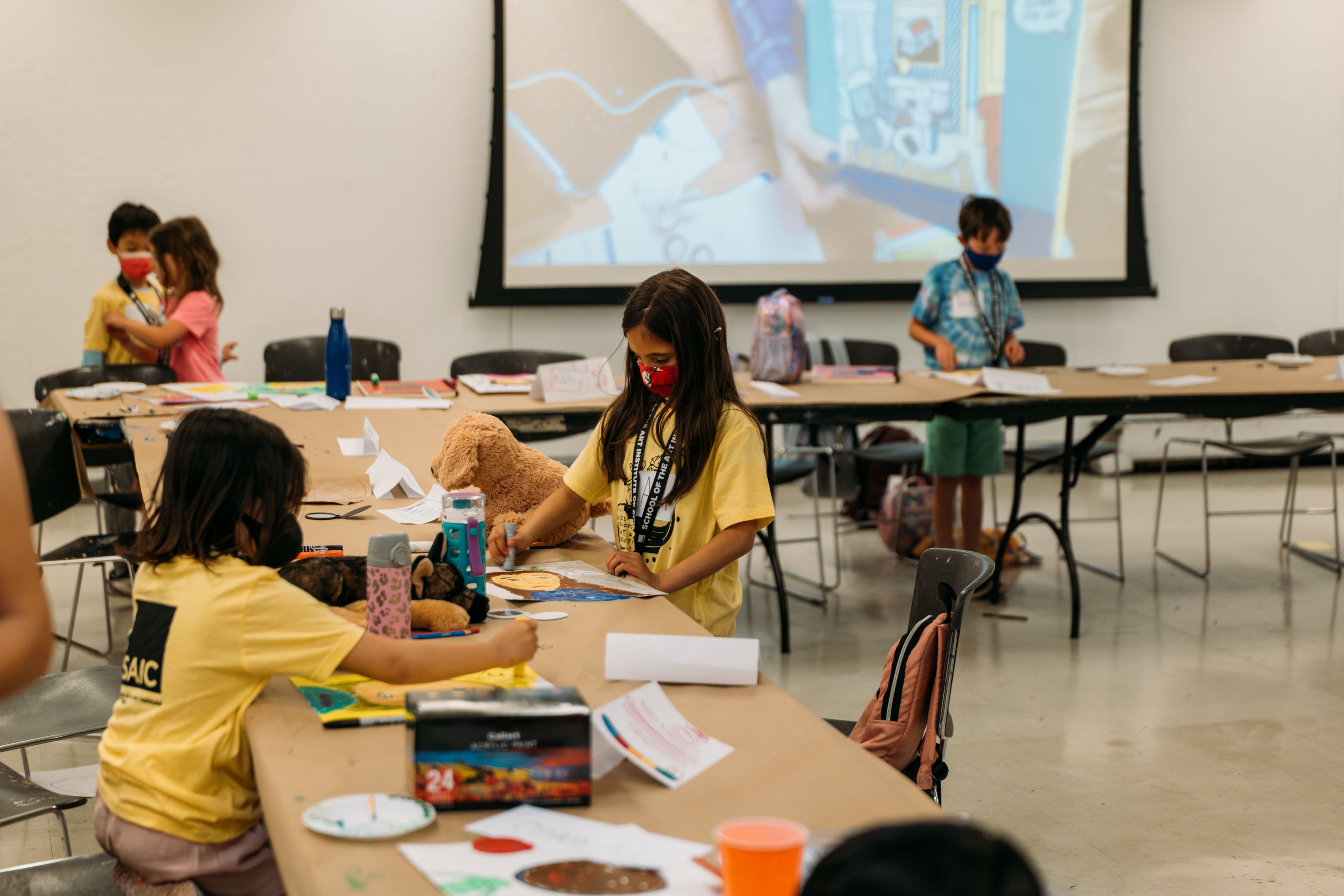Children’s Multi-Art Camps
Art is ... curious.

by Micco Caporale (MA 2018)
Spending summer in a museum might not top most kids’ vacation lists, but Continuing Studies’ multi-arts camps make the visits part of the fun.
Take the session led by Ömürhan Alptekin Torres and Eileen Sheehan in July. With the help of two teaching assistants, the duo spent a week guiding 30 six- and seven-year-olds through creative exercises inspired by visits to the Art Institute of Chicago. Age is no obstacle to being treated as a serious artist. Not only were students introduced to new artists and approaches, but they were also invited to ask, “What makes my perspective mine?” The fast-paced journey fostered the kids’ creative development while encouraging critical thinking about process, material, observation, and experience.

Students learned self-expression through self portraits.
Students learned self-expression through self portraits.
Every camp session features a new-to-each-other pair of instructors, but Torres and Sheehan describe the collaboration as quite natural. Torres, a visual artist who primarily paints and draws, has been teaching and tutoring for seven years, and Sheehan, a dancer, has been teaching for almost 20 years. Designing the class felt like a creative dialogue where their practices could feed off one another.
From 9:00 a.m. to 4:00 p.m., students divided their time between a making room, where every day involved at least one big visual art project, and a critique room, where ideas like color, shape, and abstraction were reinforced with movement-based activities. “The actions might be different,” explains Sheehan, “but the vocabulary and thoughtfulness of the practices are similar.”
“Repetition is very important at that age,” says Torres. “They need exposure to information multiple times. So after I taught them lines and shapes with materials like markers, they’d visit Eileen to make lines and shapes with their bodies. That way, it wasn’t just instruction; it was process. What does a line look like? What does it sound like? What do you think about when you think about lines?”

At camp, age is no obstacle to being treated as a serious artist.
At camp, age is no obstacle to being treated as a serious artist.
Torres and Sheehan knew they wanted to get the kids into the museum as often as possible, so they identified what they expected to resonate strongest—things like Egyptian and Roman antiquities and the Thorne Miniature Rooms—then planned complementary activities around them. For example, a trip to the prints room was followed by a lesson in block printmaking. On another day, students were shown a presentation on pop art, then given hand mirrors and encouraged to draw themselves. They were invited to add sticker dots and paint bold swathes of colors, in the vein of Roy Lichtenstein and Andy Warhol. Torres reminded them each picture and approach would be as unique as the person who made it. Focus on the process, not the result. At the end, students added text that reflected something about their individual interests, e.g. “I love my dog.” The activity concluded with a museum visit to see master works of pop art. Later, it was reinforced with mirroring exercises with Sheehan.

From the Art Institute galleries to the classroom, young students discover their own art-making powers.
From the Art Institute galleries to the classroom, young students discover their own art-making powers.
With that much to do every day, a week goes by fast—but it leaves a lasting impression. “I’ve met students in the high school programs that were in my camp when they were six or seven,” Sheehan beams. “One year my camp assistant was an SAIC student who’d been at a camp when he was six or seven. And I’m like, ‘What? That was a long time ago.’ It’s just really exciting.” ■

